Energy Minister Launches Career Transition Plan For Dounreay Workforce
17th September 2007
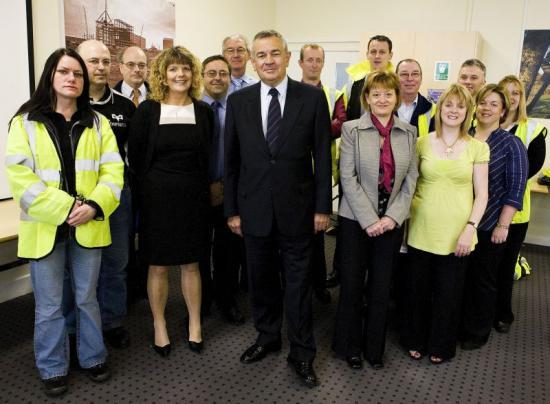
Shutting down and cleaning up the fast reactor experiment at Dounreay forms a large part of the economy in the north Highlands. It is worth an estimated Ł80 million a year to Caithness and north Sutherland and accounts for one in every five jobs locally.
But shutting down the site means that almost all of these 2000 or so jobs will have disappeared by the time the clean-up is finished in 2032. The workforce is expected to reduce by a quarter within a few years and most jobs are expected to have gone in little more than a decade from now.
A new programme launched this week aims to help workers decide what they want to do when their existing skills are no longer required and give them the resources they need to do it. Plan-It is a voluntary initiative based on a pioneering self-help scheme developed by Liverpool University and funded by local development agency HIE Caithness and Sutherland.
Trade unions have backed the scheme and its learning reps are playing a key role in the delivery. Through a series of thought-provoking sessions, Plan-It aims to get workers thinking about where they want to be in 3-5 years' time and to begin planning for that now.
They will be helped to set personal goals, such as retraining for a different job, self-employment or retirement, with financial support and practical advice available to make it happen. The first 64 places on the initiative have been snapped up and there is now a waiting list for the next batch of sessions,
Energy Minister Malcolm Wicks met some of the first group when he visited Dounreay today (Friday, Sep 14) before attending a conference in Thurso about economic regeneration. "We all want to see this site decommissioned in a way that takes account of the social and economic consequences of closure," he said. "That is why I warmly welcome this initiative by UKAEA, on behalf of the Nuclear Decommissioning Authority, to help workers plan now for the day when their current job comes to an end.
"The workforce at Dounreay is uniquely skilled in a wide range of disciplines that can transfer easily to other parts of the economy, such as renewables and oil and gas. This new initiative is an important contribution to regenerating the economy of the area and ensuring that the lasting legacy of Dounreay is one of skills and enterprise that can flourish beyond its closure."
Dounreay director Simon Middlemas said: "We have a duty to close down this site in a way that gives our workforce and local community hope and optimism about their prospects beyond decommissioning. We can do this by working in partnership with the trade unions, Highlands and Islands Enterprise and others, and I am delighted by the response so far from the workforce to this new initiative."
About half the 2000-strong workforce is employed by the UKAEA. Another 300 or so are permanent staff employed by sub-contractors, with the remainder made up of itinerant sub-contractors.
Plan-It is available initially to UKAEA staff, with the first 100 expected to have personal development plans in place by the end of December, followed by an average of 200 a year. UKAEA is working with its sub-contractors and HIE to help the supply chain plan for its future beyond Dounreay.
Related Businesses
Related Articles
UKAEA develops 3D printing for fusion components
At its recently opened Central Support Facility (CSF), UKAEA has commissioned an electron beam additive manufacturing machine that can be used to incorporate tungsten into components, alongside a selective laser manufacturing machine. Fusion can play a key role in a global low carbon energy future.Advancing Fusion Remote Maintenance: Industry Collaboration Driving Innovation
As part of the Fusion Futures (FF) programme, UKAEA's  Remote Applications in Challenging Environments (RACE)  has partnered with industry leaders to develop two groundbreaking technologies for remote maintenance in fusion energy engineering. Thanks to FF funding, industry has taken the lead in maturing UKAEA technology concepts—delivering real-world solutions that enhance operational autonomy and reduce maintenance burdens in extreme environments.UKAEA launches International Fellowships Scheme for fusion
UKAEA has launched the International Fellowships Scheme, an initiative to help expand the global talent pool supporting the fusion industry. The scheme is part of the UKAEA's Fusion Opportunities in Skills, Training, Education and Research (FOSTER) Programme, which aims to train, support, and empower the next generation of professionals, who will help deliver fusion power to the grid.Kyoto Fusioneering and Astral Systems join Culham fusion hub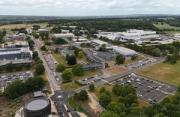
UKAEA's Culham Campus welcomes Kyoto Fusioneering and Astral Systems as its latest tenants. Two pioneering companies, Kyoto Fusioneering and Astral Systems, have joined the growing cluster of fusion technology and AI organisations at United Kingdom Atomic Energy Authority's (UKAEA) Culham Campus.
Fusion-grade Steel Produced At Scale In UK-first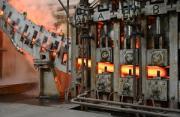
Researchers achieve 10x production cost savings for reduced activation steel. A United Kingdom Atomic Energy Authority (UKAEA) working group has successfully demonstrated the industrial scale production of fusion-grade steel.
UKAEA To Lead The Creation Of A Robotics And AI Cluster
UKAEA will lead the creation of a new ÂŁ4.9m nuclear robotics and artificial intelligence cluster across Cumbria and Oxfordshire. The robotics and AI cluster was announced by UK Research and Innovation (UKRI) as one of seven new projects to kickstart economic growth and address regional needs: www.ukri.org The robotics and AI cluster will link Cumbria and Oxfordshire to accelerate the decommissioning of the UK's legacy nuclear fission facilities and keep people out of hazardous environments.
Diamonds Are Forever? World-first Carbon-14 Diamond Battery Made In Uk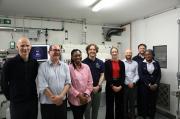
The world's first carbon-14 diamond has been produced with the potential to provide power for thousands of years. Scientists and engineers from the UK Atomic Energy Authority (UKAEA) and the University of Bristol have successfully created the world's first carbon-14 diamond battery.
UKAEA Monthly Newsletter Latest Edition
Find out what has been happening at UKAEA in our monthly newsletter. Read about our recent activities and upcoming events.
UKAEA Newsletter - Edition 11 Published Today
Find out what has been happening at UKAEA in our monthly newsletter. Read about our recent activities and upcoming events.
Corwm Visits Dounreay Nuclear Site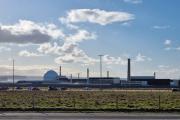
Members were given an overview of the scale of the problem and challenges faced in the decommissioning of the site. In the last week of March 2024, several members of CoRWM led by the Chair, Sir Nigel Thrift, made the long journey up to the North of Scotland to visit the Dounreay nuclear site, now managed by Nuclear Restoration Services.
